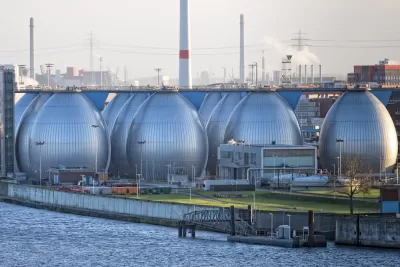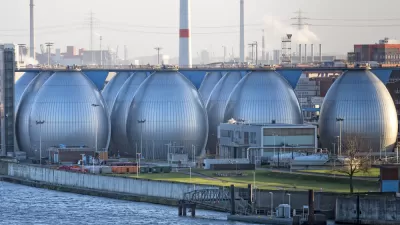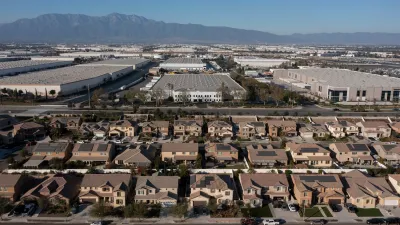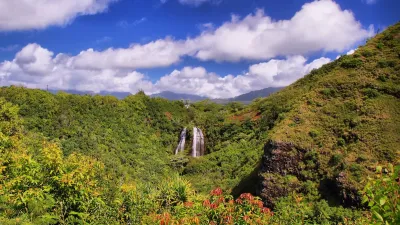The plants provide much-needed fresh water, but the environmental costs are immense.

Tik Root reports on a new study in the journal Science of the Total Environment about the outputs of desalination plants:
The literature had long assumed a one-to-one ratio. But [Manzoor] Qadir’s study found that the average desalination plant actually produced 1.5 times more brine than desalinated water—fifty percent more than previously thought. That translates to 51.8 billion cubic meters of brine each year, which Qadir says is enough to cover all of Florida, a foot deep.
Root notes that 16,000 plants are currently in operation or under construction around the world. The facilities are costly to operate, require large amounts of energy, and produce significant emissions. But the brine especially concerns scientists because of the effects of the salinity and temperature of the water and because copper and chlorine used during desalination ends up in the discharge.
Some observers believe that the brine is not a huge problem because it can be disposed of safely, but others say the problem runs deeper. "[John] Burt adds that while regulation can help mitigate these risks, enforcement varies widely from place to place. And, in the Arabian Gulf, where nearly half of the world’s desalination occurs, he says oversight tends to be relatively weak," writes Root.
FULL STORY: Desalination plants produce more waste brine than thought

Maui's Vacation Rental Debate Turns Ugly
Verbal attacks, misinformation campaigns and fistfights plague a high-stakes debate to convert thousands of vacation rentals into long-term housing.

Planetizen Federal Action Tracker
A weekly monitor of how Trump’s orders and actions are impacting planners and planning in America.

San Francisco Suspends Traffic Calming Amidst Record Deaths
Citing “a challenging fiscal landscape,” the city will cease the program on the heels of 42 traffic deaths, including 24 pedestrians.

Defunct Pittsburgh Power Plant to Become Residential Tower
A decommissioned steam heat plant will be redeveloped into almost 100 affordable housing units.

Trump Prompts Restructuring of Transportation Research Board in “Unprecedented Overreach”
The TRB has eliminated more than half of its committees including those focused on climate, equity, and cities.

Amtrak Rolls Out New Orleans to Alabama “Mardi Gras” Train
The new service will operate morning and evening departures between Mobile and New Orleans.
Urban Design for Planners 1: Software Tools
This six-course series explores essential urban design concepts using open source software and equips planners with the tools they need to participate fully in the urban design process.
Planning for Universal Design
Learn the tools for implementing Universal Design in planning regulations.
Heyer Gruel & Associates PA
JM Goldson LLC
Custer County Colorado
City of Camden Redevelopment Agency
City of Astoria
Transportation Research & Education Center (TREC) at Portland State University
Jefferson Parish Government
Camden Redevelopment Agency
City of Claremont





























